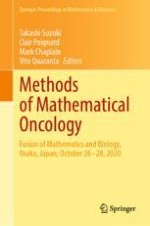2021 | OriginalPaper | Buchkapitel
Signaling Networks Involved in the Malignant Transformation of Breast Cancer
verfasst von : Mizuki Yamamoto, Jun-ichiro Inoue
Erschienen in: Methods of Mathematical Oncology
Verlag: Springer Singapore
Aktivieren Sie unsere intelligente Suche, um passende Fachinhalte oder Patente zu finden.
Wählen Sie Textabschnitte aus um mit Künstlicher Intelligenz passenden Patente zu finden. powered by
Markieren Sie Textabschnitte, um KI-gestützt weitere passende Inhalte zu finden. powered by
